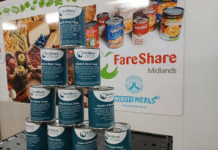
To facilitate the configuration of bioreactors – a key technology for the new food industry – GEA, a German corporation, mostly active in the food and beverages sector, has developed a digital twin for virtual testing prior to construction. The aim is to create an optimum growth environment for cultured cells, which behave differently in mass production volumes than at laboratory scale.
Developing higher-performance bioreactors is a priority for the GEA Center of Competence for Bioreactor Technologies due to an impending dramatic capacity shortfall on the bioreactor market. Validation of large-scale fermenters using a digital twin is a key step in ensuring optimal growth conditions and making it possible to take new food processes successfully to scale, the company said.
“A bioreactor is a vessel that has to function like a living body. Inside it, life develops under highly complex conditions. Working on an industrial scale, we have to make living organisms predictable, because we need reliable and replicable performance to go hand in hand with maximum productivity,” explains Daniel Grenov, product manager, Bioreactor Technologies at GEA. “A digital twin simulates the environment inside bioreactors in a wide variety of scenarios. This lets us precisely match the tank design and the mechanical configuration for fine-tuning parameters such as shear stress, temperature, nutrient and oxygen distribution to what the cells need.”
CFD improves bioreactor performance
The virtual bioreactor testing is based on computational fluid dynamics (CFD), which models the growth behavior of cells as well as the oxygen and nutrient delivery radii inside the reactor. “Experts estimate that, when scaling up bioreactors, uneven distribution of oxygen and nutrients inside the tank often leads to performance losses of up to 30%,” Grenov says.
Like all living organisms, cells locate near sources of oxygen and nutrients. Temperatures and pH levels are critical and the environmental conditions must be kept homogeneous. Conversely, a lack of oxygen or nutrients puts cells under stress, causing them to lose productivity or release growth-inhibiting metabolites when they live in a confined space for an extended period of time.
“So we can’t simply stir the tank more, because the resulting shear stresses might kill cells and, in large reactors, contribute to oxygen gradients – in other words, an uneven distribution of oxygen.” This risk can be banished by using CFD simulation and by calculating kinetic models, both of which are powerful product development tools. Combined with physical test rigs to measure bubble sizes, and equipment behavior, GEA optimizes the performance of large-scale bioreactors right on the drawing board.
IndiFoodBev — authentic, impactful and influential
An English-language food and beverage processing and packaging industry B2B platform in print and web, IndiFoodBev is in its third year of publication. It is said that the Indian food and beverage industries represent approximately US$ 900 billion in revenues which implies more than 20% of the country’s GDP. Eliminating the wastage on the farmside can help to deliver more protein to a higher number of the population apart from generating sizable exports. The savings in soil, seeds, water, fertilizer, energy and ultimately food and nutrition could be the most immense contribution that country is poised to make to the moderation of climate change.
To improve your marketing and grow sales to the food and beverage processing and packaging industry, talk to us. Our research and consulting company IppStar [www.ippstar.org] can assess your potential and addressable markets in light of the competition. We can discuss marketing, communication, and sales strategies for market entry and growth.
Suppliers and service providers with a strategy and budget for targeted marketing can discuss using our hybrid print, web, video, and social media channels to create brand recognition linked to market relevance. Our technical writers are ready to meet you and your customers for content.
The second largest producer of fruit and vegetables in the world is continuously expanding processing capacities and delivery systems with appropriate innovative technologies. We cover product and consumer trends, nutrition, processing, research, equipment and packaging from farm to thali. Get our 2025 media kit and recalibrate your role in this dynamic market. Enhance your visibility and relevance to existing markets and turn potential customers into conversations. Ask for a sample copy of our bi-monthly in print or our weekly IndiFoodBev eZine each Wednesday.
For editorial info@ippgroup.in — for advertisement ads1@ippgroup.in and for subscriptions subscription@ippgroup.in
Naresh Khanna – 10 February 2025
Subscribe Now










